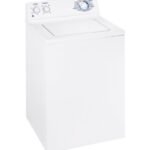Note: Many of my below remarks pertaining to the Total Gym “1000” model more or less pertain to still other popular Total Gym models at or near the “bottom end” of the price/features spectrum.
Preface:
For many years you probably saw Chuck Norris and Christie Brinkley hawking a “Total Gym” exercise machine on television. To my knowledge the models they’ve generally promoted were not the ones most commonly (and affordably) available in retail stores. The “1000” model that I’m discussing here is one of the latter variety. When I bought mine in early 1998, the “1000” was still going strong; however, not long thereafter, it was supplanted by a “1500” model; and more recently still other models have been introduced.
Frankly, all Total Gym models–ranging up to units costing at least $4,695.00–have a lot in common. The basic concept is that of a “sliding incline board” whose angle is adjustable such that you can increase the resistance as you use (primarily) your own body weight to strengthen various muscles. On many models you can raise (or lower) the upper end of the incline board by repositioning a metal pin into one of a number of vertically arranged holes. Other models employ other means for adjusting the degree of incline (and weight resistance); the most costly models employ motorized adjustment, which I myself have never tried but which I surmise would make workouts much easier and more “seamlessly continuous”. If your budget allows it (i.e., if you’re so well-heeled that you casually opt for Corvettes rather than Kias), I would urge you to consider such a model, or at least one of the next best types of “manual-adjustment” models that don’t necessitate tedious insertion (and removal and re-insertion) of any “pin” into holes. Whatever you do, also strongly consider getting a model that allows the attachment of additional weight (plates) such that certain exercises (e.g., leg squats) could be more effective.
The Lowly (Yet Popular and Venerable) “1000” Model:
It remains true that many of this “1000” model’s virtues and shortcomings are, in varying degrees, still shared by various other Total Gym models. However, the present discussion will largely focus on my impressions after having lived with and used this unit (not to mention other types of weight-resistance gear) during the passage of one decade. During that period my feelings toward this model have become somewhat modified, for better or worse. Here are some points that strike me as particularly noteworthy:
Portability and storability.
Although its “in-use” length of 88 inches means that accommodating this machine might be a tad problematic in a minority of people’s homes, generally the Total Gym 1000 is relatively easier to manage than are most other “multi-gym” or “all-in-one” weight-resistance machines. After all, it’s scarcely over 16 inches wide, and it weighs only 58 pounds.
Moreover, it comes basically fully assembled and can be (fairly) quickly and easily “folded” into a configuration easily stored flat beneath many a bed–or perhaps upright in many a closet. When “folded” the machine is only 50.5 inches long and 8.5 inches high. Once folded, the unit can simply be “rolled” to the bed (or closet).
That said, I myself have never had to “fold” my unit. Along with numerous other–heavier and bulkier–machines, my Total Gym is always conveniently ready to use within my “home gym” (i.e., the “unfinished” half of the basement).
Not enough resistance for “leg squats” (and perhaps certain other exercises).
This is where some of the costlier Total Gym models–not to mention comparable machines from competing manufacturers–would surely be preferable to the “1000,” which doesn’t allow you temporarily to attach additional weight (plates) to the incline board. [However, see my “cheater’s tip” in the final paragraph of this secton.]
According to the “Exercise Booklet” (included with the machine), the maximum possible amount of weight resistance with this product is from 43% to 51% of the user’s body weight. In other words, the booklet’s chart claims that a person weighing 150 pounds–operating the machine with the upper end of the glide board fully elevated to provide the steepest angle (a 24-degree slope)–would experience resistance equivalent to 66 pounds. By contrast, a 250-pound user could experience resistance equivalent to 108 pounds. And a 50-pound user could experience resistance equivalent to only 26 pounds. [NOTE: The “Owner’s Manual” states that the maximum user weight for this particular “bottom-end” Total Gym model is 275 pounds.]
Frankly, when I actually use the machine in its various adjustable modes, it’s hard for me to take some of the booklet’s weight-resistance amounts fully seriously. For example, when I try doing a “leg squat” (both legs simultaneously), it seems disappointingly easy even if I set the angle at “maximum resistance”–unless I move extremely s-l-o-w-l-y. (And even then there’s not really enough resistance to satisfy me.)
By contrast, when I use the same “maximum resistance” setting and use the machine’s handgrips, cables and pulleys to perform the basic “arm pullover” exercise, I could easily believe that there’s significantly more resistance than just the booklet’s stated “74 pounds” for a person of my approximately 170-pound weight. Admittedly, these are merely my offhand impressions, not “scientifically verified” comments.
My basic point is that–for me personally–this machine has somewhat less value for its “leg squat/press” movements than its many other movements. That’s a shame, given that those particular leg motions are very conveniently and comfortably done with this general configuration of (gliding-incline-board) machine, which brings me back to the following significant (aforementioned) point about this particular (“1000”) model: it doesn’t allow you (temporarily) to attach additional weight (plates) to (posts attached to either side of) the incline board. Had I originally realized the significance of that capability, I wouldn’t have selected (settled for) this particular (bottom-end) model. Instead, I’d have spent roughly twice as much to own a superior model from the “Total Gym” company or perhaps a competing manufacturer.
There is, nevertheless, a way to tweak a modest yet noticeable measure of extra weight resistance out of this (or any) Total Gym model. I discovered that it’s quite easy to (temporarily) position two to four layers of unbuckled “ankle/wrist weights” upon the machine’s board (i.e., at the upper end of the board, beneath my head). I then simply rest my head upon the layers of extra weight before proceeding to perform leg-press exercises. Thusly adding up to 20 pounds (to my own body weight) increases the effective weight resistance of the machine by at least nine pounds. That doesn’t sound like much, but I can definitely feel more of a “burn” in my leg muscles, provided I do the up-and-down movements very slowly. And adding or removing such “ankle/wrist weights” is quick and easy.
Not quite as much length (height-accommodation) as I’d like.
The official “User Height Limit” of the “1000” model is only six feet (however, I’m 6′ 1″, and I have no major difficulty using my unit, and I suspect users as tall as 6′ 2″ might squeak by if they’re careful doing certain exercises). By contrast, the various more expensive Total Gym models are said to accommodate users from 6′ 2″ to at least 6′ 10″.
Bottom line: although I’m “satisfied” with this machine’s ability to accommodate my 6′ 1″ height, I’d prefer a model allowing me the ability to “stretch out” a bit more without fear of contacting the top of my head against the upper end of the machine while performing certain exercises (e.g., “arm pullovers”).
A (tolerable) delay when switching to “leg-pulley” (“Pilates”) from other exercise modes.
To perform “leg-pulley” exercises, not only must you temporarily attach a “leg-pulley bracket” to the upper end of the machine but also you must attach one or two “foot harnesses” to your feet. These harnesses are rather rudimentary (albeit sufficiently durable) reinforced-nylon devices with shiny metal O-rings onto which you must attach a metal clip (at the terminal end of a leg-pulley cable). Once you have the harnesses’ respective buckles sufficiently tightened, the harnesses are sufficiently effective and reasonably comfortable–especially if you’re lying flat on your back (upon the incline board) while performing basic “leg-pulley” moves (one leg at a time). However, if you lie on either of your sides and try to perform a variant of the basic “leg-pulley” movement, you may find that the foot harness doesn’t feel quite so comfortable or seem quite so securely attached around your shoe. [Moreover, you may feel at a somewhat greater risk of falling off the incline board.]
That said, the fact remains that you can effectively perform “leg-pulley” movements with the Total Gym 1000, and that capability’s a nice “bonus” to companion the machine’s many other exercise modes.
It’s a major hassle to reposition the “wing attachment” from top to bottom.
At first glance the removable “wing attachment” resembles “standard” (not “racing”) bicycle handlebars; for many exercises you grip it, push against it, etc.
The model 1000 (normally) only included one “wing attachment”. You supposedly could continually reposition it from the top end to the bottom end of the machine (or vice versa). However, I personally would find that an intolerably tedious nuisance.
Largely through sheer luck, after politely explaining (to a Total Gym phone representative) that my unit’s included wing attachment didn’t fit at all easily onto the frame of the machine, I ended up with not one but two wing attachments; moreover, I was finally able to adapt the original “overly tight” wing attachment using some of my own bolts, nuts and washers, and thus I’ve long been able to have both wing attachments “permanently” mounted at both the upper and lower ends of the machine–making it unnecessary to continually remove and remount a single wing device as I switch from “lower” to “upper” exercise modes. This has proved extremely convenient and advantageous. However, if I only had one wing device, I’d generally keep it mounted in the “upper” position; that way, you can “make do” by holding the soles of your feet against the lower feet of the machine to do some “leg presses”.
Mostly–but not 100%–“safe”.
Contrasted with conventional free weights (i.e., barbells and dumbbells), the Total Gym 1000’s “gliding-incline-board” design is analogous to various other “multi-gym” machines’ designs insofar as there’s no chance of dropping one or more heavy “plates” on your foot or losing your grip while bench-pressing a heavily loaded barbell.
Nonetheless, no weight-resistance machine is utterly without risk. With the Total Gym 1000 you could simply fall off the board, which–especially if the floor is unpadded–could result in some degree of injury. Additionally, there’s at least some risk that you (or children or pets) could get fingers or other body parts caught between one of the rails underneath the gliding board’s rollers. For this reason, as with many other machines, you should take care to prevent the unexpected near approach of children or pets during workouts.
Of course, if you start doing (for example) a “leg-pulley” exercise before performing typical warm-up exercises, you’ll substantially increase your risk of such minor muscle mishaps as hamstring pulls. (I speak from experience in that regard.) Simple “common sense” is called for when doing any weight-resistance exercise.
“Owner’s Manual” and “Exercise Booklet”.
Both of these booklets are thorough, well-written, and well-illustrated with both line-drawings and black-and-white photos.
The “Owner’s Manual” comprises 13 pages and deals with such matters as product specifications; set up; mounting the “wing accessory”; attaching the “leg pulley accessory kit”; general usage guidelines; and routine maintenance.
The “Exercise Booklet” comprises 29 pages and presumably will get more frequently used, for (in addition to the aforementioned “exercise-resistance chart”) it pretty much covers the gamut of possible exercises. These exercises are categorized such that some are included in the “Starter/beginner Program; others in the “Circuit Training Program;” others in the “Intermediate Program;” and still others in the “Advanced Training Program.” Within each of those categories, certain exercises are recommended primarily for men, and others for women.
The “Exercise Booklet” concludes with a handy “Work Progress Chart” onto which you can pencil a log of your ongoing, personal program.
Both booklets are well worth hanging onto. I only wish that all of today’s exercise products included equally thorough user manuals.
The upshot:
For $189 my Total Gym 1000 has provided good value. It continues to be fully functional, though after a decade some of the outer foam tubing has worn away from the outer ends of the arms of a “wing attachment” mounted at the lower end of the machine. Such trivial wear is entirely normal after so many yeas, and it doesn’t interfere in my use of the machine.
That said, knowing what I know now, I would have paid roughly twice as much money to own a superior model from the Total Gym company or perhaps a competing manufacturer. [One such manufacturer is “Bayou Fitness”, whose “Total Trainer” machines are intriguing–albeit I haven’t yet tested them myself. Not only are their various models much more affordable than comparable “Total Gym” models, but even their “bottom end” machine appears to include a “power bar” allowing the user to add up to 100 additional pounds of weight plates. But if you’re interested, you should double-check this informaton via their web site (bayoufitness.com) and/or by emailing them at sales@total-trainer.com.] Not only would it be nice to have a bit more length (such that my 6′ 1″ height doesn’t continually cause the top of my head to come a tad close to touching the upper end of the machine), but (even more importantly) other machines allow the temporary addition of additional weight (plates), significantly increasing their usefulness to anybody who’s already endowed with above-average strength.
The Total Gym 1000 can provide many folks lots of excellent muscle strengthening up to a point (perhaps as much at they’ll ever really need). But beyond that point, the most that this machine is likely to provide for certain muscle groups is muscle toning, unless you perform its weight-resistance exercises extremely slowly–and/or do more repetitions–to increase their effectiveness.
If you discover one of these venerable units in excellent condition and it’s downright cheap, give it some consideration. But if you really use it regularly, the day will come that you’ll regret its limitations. Therefore, I suggest you consider a comparable model providing greater weight resistance and (perhaps) accommodating users much taller than six feet.




